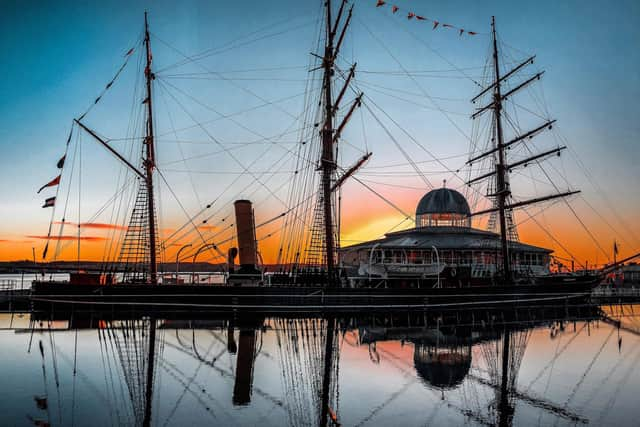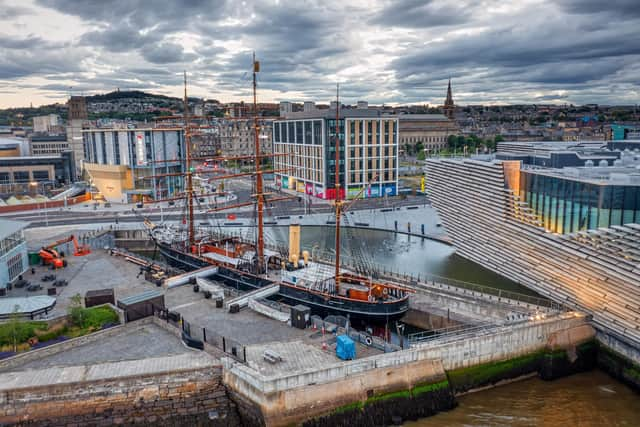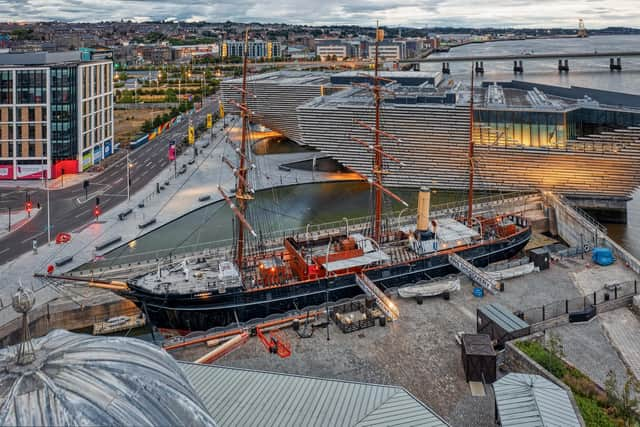Polar research vessel hailed as 'catalyst' for Dundee's regeneration after 30 years as an attraction
Now the RRS Discovery has been hailed as the “jewel in the crown” of the city’s modern-day renaissance – exactly 30 years after it was brought home to the city to become a new visitor attraction.
More than two million visitors have since flocked to the banks of the River City to learn all about the Dundee-built ship that headed to the largely unchartered waters of Antarctica.
Advertisement
Hide AdAdvertisement
Hide AdDiscovery, the world’s first ship to be designed specifically for scientific research, was built for Captain Robert Falcon Scott's first Antarctic expedition between 1901 ane 1904.


Discovery visited the United States, Russia, France, Spain, Holland, Canada and Turkey, and also made two further voyages to Antarctica, before becoming a static training ship for sea scouts in London.
However her condition had declined significantly by 1979 when she was saved from the breakers yard by the Maritime Trust, which carried out essential restoration work before ownership passed to the Dundee Heritage Trust in the mid-1980s.
The purpose-built dock created for Discovery in 1992 is now the heart of the city’s £1 billion waterfront project, which includes the V&A Dundee museum of design, a new public park and an urban beach.
Thirty years after making its final voyage, the Dundee Heritage Trust, which still runs the ship as an attraction, has hailed the vessel as “a hugely important catalyst for the city’s regeneration.”


It recently announced it had secured £409,000 worth of support from the National Heritage Memorial Fund to carry out the first phase of a £1.3 million programme of repair work on Discovery, including ensuring it remains watertight.
Jim Pettigrew, chair of Dundee Heritage Trust, said: “The arrival of Discovery in 1992 is a hugely important moment in the life of this uniquely important historic ship, finally finding her permanent home after more than 90 years’ absence.
Advertisement
Hide AdAdvertisement
Hide Ad“In many ways the fortunes of Discovery mirror those of the city itself.
“When she was launched, Discovery was the product of a proud city with a successful boatbuilding heritage, but both had seen their fortunes decline by the middle of the 20th century.


“Thanks to the commitment and hard work of everyone who has supported Discovery over the years, she is now permanently back home and the jewel in the crown of a revitalised, forward-looking city.”
Boat builder Harry Simpson, who has worked extensively on Discovery since her return to Dundee, was involved in the operation to move her to her final home in 1992.
He said: “When I first started working on Discovery, I was completely amazed at the construction and strength of the ship.
“Wooden and steel ships can both be crushed by ice, but Discovery sat there in the ice for months and still came back to Dundee.


“On the day of her return, people were lining the main roads, docks and walls along the riverside as we brought her up the river, under the Tay Road Bridge and into the dock.”
Advertisement
Hide AdAdvertisement
Hide AdDr Simon Cook, an expert in geographical and environmental science at Dundee University, said: “As the world’s first scientific research ship, Discovery occupies a unique position in the history of Scotland’s contribution to scientific knowledge."
Comments
Want to join the conversation? Please or to comment on this article.
